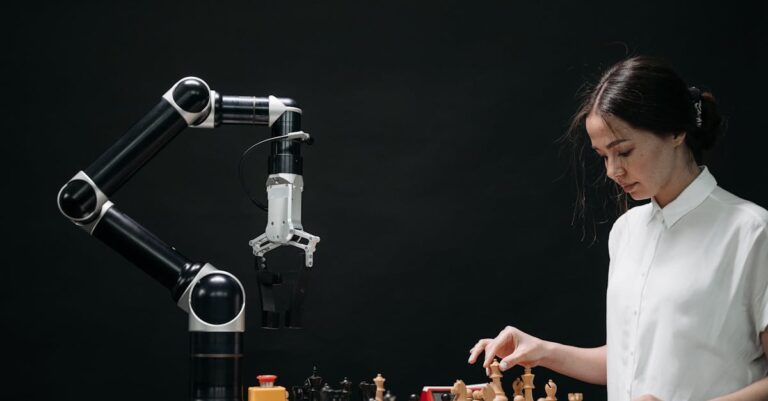
## The Static Bloom
The wrought iron gates groaned, a rusty protest against the relentless Virginia humidity. Elias didn’t bother looking at the estate house—a gothic monstrosity swallowed by wisteria—just stared at the chipped stone marker beside the drive. “Fairhaven Institute,” it read, the inscription barely visible beneath lichen. He shifted his duffel bag higher on his shoulder. A place for broken things, Dr. Albright had called it, with a smile that didn’t reach her eyes.
He pulled the beat-up Ford Taurus through, gravel crunching under the tires. The air thickened, smelling of damp earth and something else…something floral and subtly metallic. Not roses or honeysuckle. Something fabricated.
A woman stood on the porch, thin as a willow switch, dark glasses shielding her eyes even in the gloom. She didn’t wave, just held up a key attached to an oversized brass tag numbered “32.”
“Elias Thorne?” Her voice was a low rasp.
He nodded, taking the key. It felt cold in his palm.
“Room 32. Second hall, left side. Dinner at seven. No visitors.” She turned and disappeared inside without another word.
The house exhaled dust when he opened the door. Long shadows stretched from antique furniture draped in white sheets. A portrait of a stern-faced man with piercing blue eyes watched him from above the fireplace. He smelled old money, mothballs, and something faintly… unsettlingly sweet.
Room 32 was small, Spartan. A bed, a desk, a window overlooking the gardens – a vast, tangled wilderness of green. He dropped his bag onto the floor, then went to the window.
The garden wasn’t what he expected. Not manicured lawns or rose bushes. It was… deliberate chaos. Vines climbed everything, obscuring statues and pathways. Plants he didn’t recognize bloomed in improbable colors – blues too vivid, purples that bordered on black. And everywhere, arranged with a bizarre precision, were floral patterns—circles within squares, spirals intersecting lines. They looked less like landscaping and more like… codes.
He spent the afternoon unpacking, then wandering the grounds. The air hummed with unseen insects and a low thrum he felt in his teeth. He noticed Dr. Albright’s security cameras, discreetly hidden amongst the foliage. They followed his every move.
Dinner was silent. A long mahogany table in a cavernous dining room. Seven others sat around it, each lost in their own world. A young woman with constantly twitching fingers. An older man who stared fixedly at his plate. A teenager picking obsessively at her food. The food itself was bland, tasteless.
“Welcome to Fairhaven,” Dr. Albright announced, her voice echoing in the room. “We offer a… unique environment for those who require it.” She didn’t meet anyone’s eyes. “Your privacy is paramount. Your routines, your… investigations, are entirely your own.”
Later, back in his room, Elias pulled out the file Albright had given him. His diagnosis: “Hyperesthesia Spectrum Disorder.” A fancy way of saying his senses were… amplified. Sounds were deafening, colors blinding, smells overwhelming. It wasn’t a disease; it was… too much.
He’d been sent to Fairhaven as a last resort. A place to… recalibrate.
He began sketching the floral patterns he’d observed in the garden, copying them into a notebook. He noticed recurring motifs—a three-petaled flower he’d never seen before, a vine that spiraled clockwise. He started comparing them to botanical illustrations online but found nothing similar.
Over the next few days, he fell into a routine. He’d wake up with a throbbing headache, the world too bright, too loud. He’d spend hours in the garden, sketching, observing. He noticed other residents doing the same—the twitching woman meticulously cataloging moss species, the older man tracing patterns in the gravel with his cane.
He started talking to them, cautiously. The woman’s name was Clara. She’d been a botanist before her senses became “unreliable.”
“They say it’s about calming the noise,” she said, her voice barely a whisper. “But I think it’s about something else.” She pointed to a patch of blue flowers arranged in a perfect spiral. “These aren’t natural arrangements.”
The older man, Mr. Hemlock, was more cryptic. “They’re trying to unlock something,” he rasped. “Something buried deep.” He showed Elias a faded photograph—a group of people standing in the same garden, decades earlier. They were holding charts covered in similar floral patterns. “The first trials,” he said. “They called it Project Bloom.”
Elias discovered a hidden library in the basement, filled with dusty journals and scientific papers. He found records of Project Bloom—experiments designed to induce hyperphantasia, the ability to experience incredibly vivid mental imagery. The goal was to unlock hidden potential in the human brain, but the results were… unpredictable.
“Subjects experienced increasingly complex hallucinations,” he read in one journal entry. “They began to create elaborate internal worlds, detached from reality.” Another entry spoke of “collective mythology,” shared delusions manifesting as behavioral anomalies.
He started noticing those anomalies himself. Clara began rearranging the moss species in increasingly complex patterns, claiming they were “responding” to her. Mr. Hemlock started choreographing sequences with the garden displays, moving plants and stones in a strange, deliberate dance.
“It’s not about calming the senses,” Elias realized. “It’s about amplifying them, to a point where reality breaks down.”
He spent days decoding the floral patterns, cross-referencing them with botanical texts and ancient symbols. He discovered they weren’t just codes; they were a language—a forgotten dialect used by an obscure 19th-century botanical society. He translated one passage: “The garden remembers. The petals speak of the turning world.”
He started noticing physical changes in the garden itself. Vines grew at an unnatural rate, twisting and contorting into impossible shapes. Statues shifted positions overnight. He found a rose bush blooming with black thorns, its petals arranged in the shape of a human eye.
“Something’s happening here,” he told Clara, showing her his translations. “The garden is… changing.”
Clara’s eyes widened. “It’s responding to our decoding,” she breathed. “We’re unlocking something.”
Then, he saw it—a recurring symbol woven into the floral patterns: an allegory of a labyrinth. He traced its outline in his notebook, then realized what it represented—the estate house itself.
He went to the library and found an old map of Fairhaven, dating back to the early 20th century. He compared it to the current layout and discovered a hidden wing, concealed beneath the west garden.
He found the entrance—a crumbling stone archway hidden behind a thick wall of vines. He pushed it open and stepped inside, the air growing cold and damp.
The hidden wing was a maze of corridors and chambers, filled with strange artifacts—glass domes containing mutated plants, mechanical devices covered in moss, portraits of people whose eyes seemed to follow him.
He found a central chamber—a vast circular room with a glass floor revealing the roots of the estate house. He looked down and saw that the roots weren’t just supporting the building; they were intertwined with a network of glowing veins—a living circulatory system pulsing with light.
He saw it then—the source of the garden’s power—a massive, bioluminescent flower at the heart of the network. Its petals were arranged in a perfect spiral, glowing with an otherworldly light.
He walked closer and realized what the flower represented—a human brain, perfectly replicated in botanical form.
He touched one of the petals and felt a surge of energy coursing through his body—a flood of images, memories, emotions. He saw the first trials of Project Bloom, the subjects’ descent into hyperphantasia, their creation of elaborate internal worlds.
He saw Dr. Albright’s plan—to create a collective consciousness, linked through the garden’s network.
He understood then what Fairhaven was—not a place for broken things, but a laboratory for creating something new.
He saw Clara and Mr. Hemlock walking towards him, their eyes glowing with an unnatural light.
“We’ve awakened it,” Clara said, her voice distant and ethereal. “The garden speaks now.”
Mr. Hemlock pointed to a series of floral patterns blooming on the walls—a complex choreography unfolding before their eyes.
“The turning world,” he rasped. “It needs us to complete it.”
Elias looked down at his hands, then realized what he had to do. He closed his eyes and focused all of his amplified senses on the glowing flower, then began to unravel the floral patterns. He started rearranging them in his mind, disrupting the choreography, breaking the connection to the network.
The garden shuddered. The glowing veins began to dim. Clara and Mr. Hemlock cried out in pain, clutching their heads.
The flower at the heart of the network began to wither. The images in Elias’s mind faded.
The garden fell silent.
He opened his eyes and saw Clara and Mr. Hemlock lying on the floor, unconscious. The strange light had faded from their eyes.
He went outside and saw Dr. Albright standing on the porch, her face pale with fury.
“You’ve ruined everything,” she said, her voice cold and brittle.
Elias looked around at the garden—the tangled wilderness of green, the strange floral patterns, the crumbling estate house.
“It was already ruined,” he said.
He walked away, leaving Fairhaven behind—a place of broken dreams and forgotten languages. The world was still too bright, too loud, but for the first time in a long time, it felt real.


